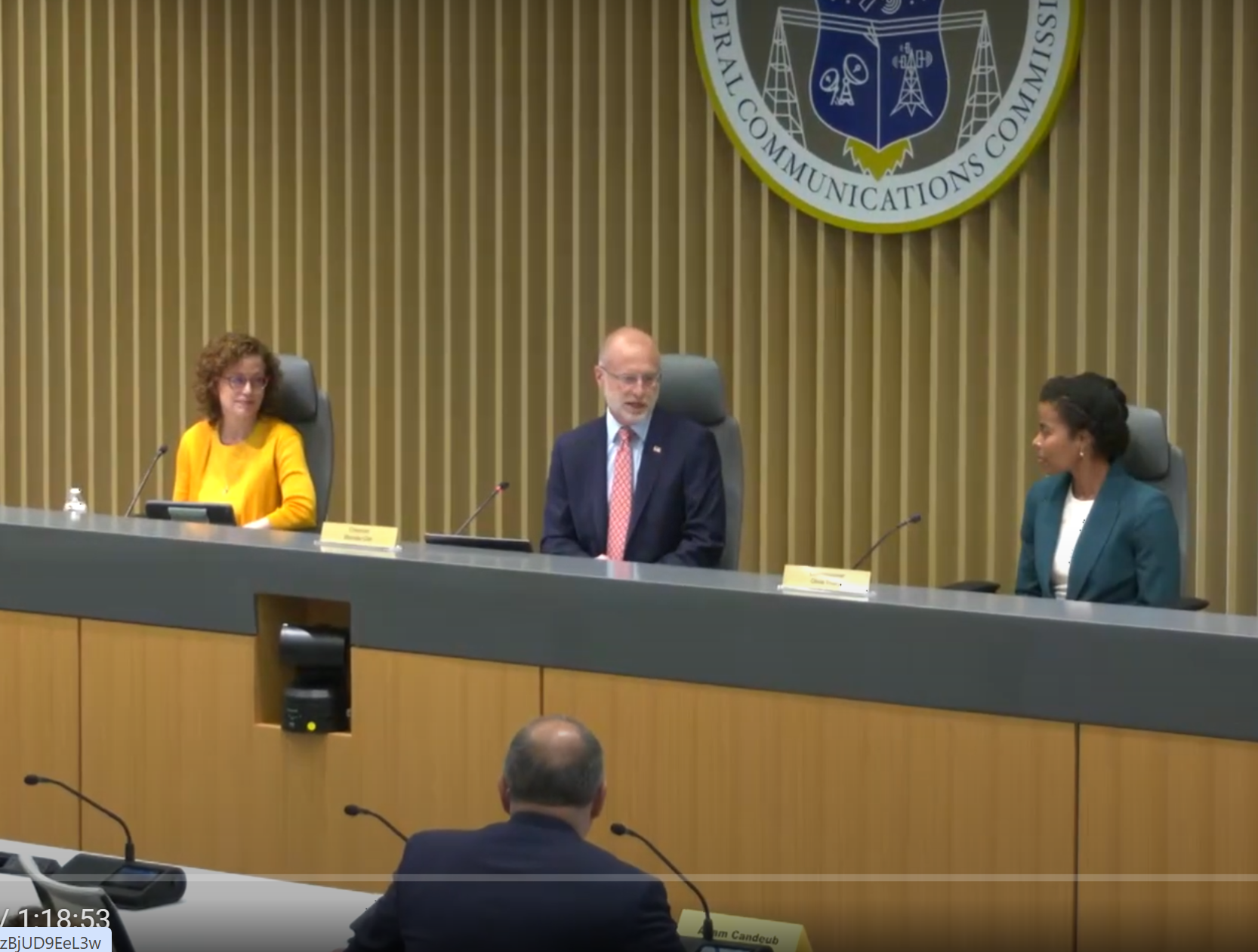Experiencing Envelopment: The Secret Sauce of Stereo
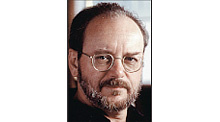
Some months ago, Bob Dixon of NBC asked me to cover problems pertaining to bass and subwoofers in this column, and I've tried over the past few months, to cover the basics (no pun intended) of that aspect of our audio craft.
Now, I'd like to wrap this up by considering the concept of "envelopment" (which depends on bass), a key ingredient of almost any successful stereo production. I personally think it is one of the most important aspects of stereophony.
THE SENSATION WE CALL 'ENVELOPMENT'
Envelopment is a subjective sensation we humans experience, through sound, of the room we're in. In the real world, we have this sensation as a function of the many early and reverberant reflections of sound sources in the room arriving at our ears at different times and from different directions, combined with the direct sound from those sources.
Generally, we have little conscious awareness of envelopment—I think of it as almost entirely subliminal, until we practice hearing it. For instance, when we have a conversation with someone in a room, almost any room, we generally don't notice the envelopment that is occurring, just the talk itself.
However, when we are producing a stereo audio program, envelopment is quite different. We generally wish to have our end-users perceive the "sound of the recorded space" instead of "the sound of their living room," and we do this through the use of various stereophonic mic arrays, signal processing effects and reverberance. And when we do it well, our listeners love the cognitive dissonance of the illusion—their room has disappeared!
They usually think of it as magic. They love how their living room seems to go away, to be sonically replaced with a concert hall, a club, a cathedral or a reverberant valley or canyon. "Way cool" is their technical term to describe this.
STEREO AS SUM AND DIFFERENCE SIGNALS
As many (most?) of you know, the Left/Right stereo pair of signals can be transformed into a different pair of signals we call Sum and Difference. This Sum/Difference signal is at the heart of most stereo broadcast transmission and it is also the conceptual basis for Dolby Pro Logic Surround Sound.
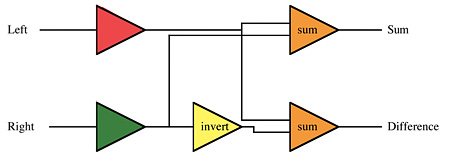
Fig. 1: Shuffler converting Left and Right to Sum and Difference. We create it by using a simple device, easily configured on any console or workstation, called a "shuffler." (See Fig. 1)
This is very straightforward. Left and Right signals are added together to create the Sum signal. Meanwhile, the Right Signal is also sent to an "inverting" amplifier, which reverses its polarity. The Left Signal and the inverted Right Signal are added together to create the Difference signal. Got that? Good!
What's a little less obvious, but equally simple, is that the same shuffler, when fed with a Sum and a Difference signal instead of Left and Right, will yield Left and Right as seen in Fig. 2.
This always hurts my head to reason through, but it's true and it works. Try it. You'll like it. Any FM stereo signal is actually a sum and difference signal pair, for instance.
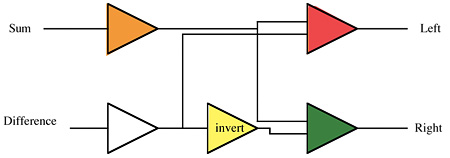
Fig. 2: Shuffler converting Sum and Difference to Left and Right.USING THE SHUFFLER FOR FUN AND PROFIT
Naturally, you can put a pair of shufflers in series and add signal processing to either the Sum or the Difference path, or even both, and then recombine them back into Left and Right. (See Fig. 3)
This is a cinch to do in software, so you can even have a lot of fun with aux buses in your workstation doing exactly this. Many of the plug-in manufacturers offer stuff like this, including iZotope and Waves. I'm not going to spend time on the rich array of cool things you can do to Sum and Difference signals here—maybe in a future article?
What's important to know is that this is how you can get control of the Difference signal and change its spectrum, and that is how you enhance the sensation of envelopment.
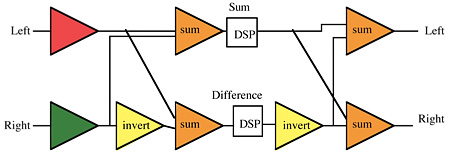
Fig. 3: Shufflers in series permitting processing of the Sum and/or Difference signals.ADDING ENVELOPMENT TO STEREO AND SURROUND
Our sensation of envelopment seems to come mostly from the difference signal (which is, of course, the sum of all the things that are "not the same" between Left and Right channels).
Back in 1987, David Griesinger pointed out, in a fairly seminal AES paper, that by boosting the upper bass (100–400 Hz.?) of the Difference signal we could significantly increase our sense of envelopment. Since that time, many of us classical recordists have fiddled with exactly that value to "set the envelopment" of our recordings.
Meanwhile, hardware and software manufacturers, both digital and analog, have incorporated Griesinger's insight into many of their products. (They call them all sorts of things, such as "Width," "Spaciousness" and "Killer Negative Hyper-phase Warp," among others.)
You can be lazy and simply use their pre-sets, or you can do it yourself, which is probably better. Try adding to the Difference signal some gentle upper-bass boost (start with an EQ band centered at ca. 300 Hz., with a Q of 1–1.5, and a boost of up to 4 dB, only on the difference signal) until the amount of "width" and a feeling of the sound "wrapping around you" feels really good, even while all the sound sources are still appearing to come from the front, between the speakers.
To me, it's very powerful medicine, and it is a big part of what makes multichannel recording work so well for us couch potatoes.
SOME OTHER CAVEATS AND COMMENTS
A couple of cautions: the Difference signal is cancelled out when summed to mono, of course. This means that, by definition, you can't send it to the LFE channel and subwoofer. It's got to be, reconstructed in stereo, in the Left and Right speakers.
If you're brave, you can also begin to experiment with a second derivation of the Difference signal to send to the surround channels, for even more (and better?) envelopment. As I said, it is powerful medicine. And, if you do it right, it really does seem like magic.
You know you've got it going well when you aren't very aware of it when it's playing, but when you mute it you palpably feel the mix collapse to something comparatively thin, narrow and unconvincing. Then, when you lift the mute, you feel the mix blossom back into some full, convincing and, well, enveloping essence.
Well then, moving right along, I see that the calendar has toppled over into a new year once again. I hope you all had really pleasurable holidays. Next month, I'll take another annual look at where we seem to be in the great saga of the Loudness Wars.
Thanks for listening.
Dave Moulton is trying to remain CALM, while dividing his time between the fireplace and the home theatre, with occasional trips to the fridge and wine cellar. You can still complain to him, even after all these years, about anything! Just abuse his website, www.moultonlabs.com.
The professional video industry's #1 source for news, trends and product and tech information. Sign up below.

